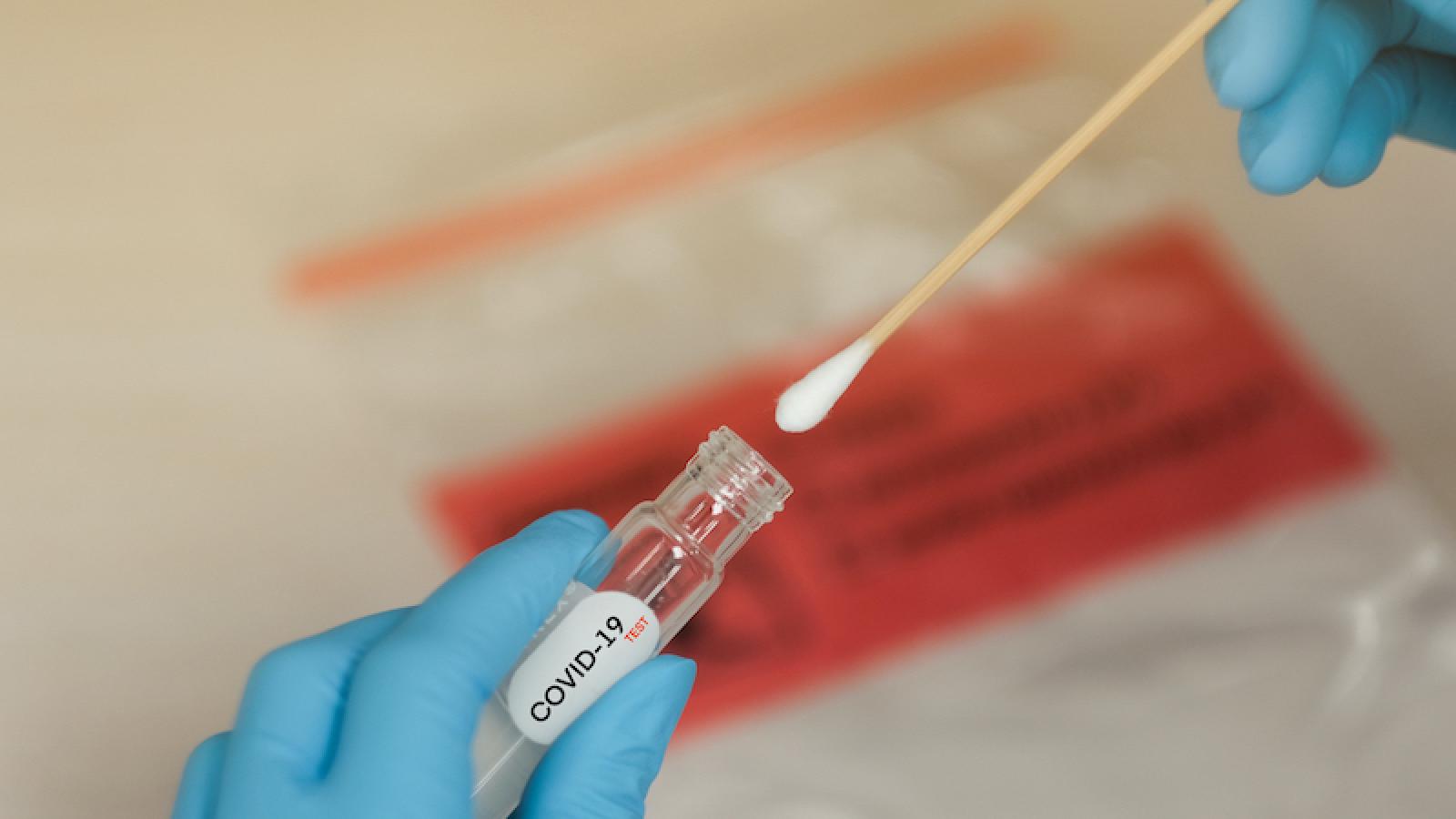The UK DRI team behind a high-throughput robotic coronavirus testing platform that was developed in just nine days in April, have made the full details of their setup and workflow available to others, in an effort to support the scaling-up of testing capacity across the UK.
Published today with open access in Nature Communications, the paper details how the team adopted the gold standard test already being used by the NHS, and applied new methods to validate their high-throughput workflow, which has now been accredited and implemented by NHS pathology labs.
The Covid-19 pandemic has shown how the rapid rise in demand for patient and community testing, essential for tracing and containing a highly infectious disease, has quickly overwhelmed testing capability globally. With most diagnostic infrastructure dependent on specialised instruments with exclusive reagent supplies, these have quickly become bottlenecks in times of peak demand, creating an urgent need for new approaches to boost testing capacity.
UK DRI Group Leader Prof Paul Freemont, based at Imperial College London as part of the UK DRI Care Research & Technology Centre, sought to address this challenge by repurposing the fully automated synthetic biology workflows available at the London Biofoundry, which he co-directs. This versatile equipment infrastructure is usually applied in a range of cutting-edge research projects, including testing for infections in vulnerable people such as those living with dementia.
to develop the high-throughput robotic coronavirus testing platform for Covid-19
We were working against the clock and forced to think about our technology in a whole new way.Prof Paul Freemontbased at Imperial College London as part of the UK DRI Care Research & Technology Centre
In order to repurpose the robotic platform as an alternative coronavirus sample testing pipeline, Prof Freemont’s team had to create new software and hardware, and develop new testing standards to guarantee highly reproducible results. They generated an open-source virus-like particle as a coronavirus standard, and used this to validate their system against the NHS coronavirus test. They applied two new – and more rapid than standard PCR – detection methods based on the gene editing protein CRISPR, and a robust colour change assay called LAMP. These new assays were then also validated using patient samples.
“We were working against the clock and forced to think about our technology in a whole new way”, says Prof Freemont, whose team worked extraordinarily long hours to have the platform ready for use in under two weeks. “We recognised early on that we needed to work shoulder to shoulder with our colleagues in the NHS to ensure we could get them something that was workable in their labs. We needed to be able to deploy it quickly and scale it up to meet demand. It was a huge challenge, but we were all totally committed to making it work, even when that meant persevering through numerous blocks and challenges along the way.
We were very fortunate that the UK DRI immediately saw the value and potential of what we were doing, and mobilised people and funds to help us focus on making it work. I was also very fortunate to have an amazing team at the London Biofoundry who developed this work in record speed, and also great NHS colleagues willing to collaborate with us.”
The result was a modular system that fits on a small lab bench and can be easily scaled up. Each platform has the capacity to process 1,000 samples in a 12-hour period. In addition, the system can use many different reagent sources, so that if one supply dries up, it can simply move to using another, giving it a significant advantage over other testing platforms available.
The validated RNA extraction and RT-qPCR platform has been in operation at Charing Cross and St Mary’s Hospitals in London since April, where the system recently helped the diagnostic team to test 5,000 samples in just 5 days after a local Covid-19 outbreak.
“We’re constantly refining our methods, while exploring opportunities to bring more of the modules to more locations to help increase testing capacity. It was important to us to be completely transparent about what we were doing and how it worked, and we hope that by publishing the full workflow, others will be able to implement similar systems elsewhere,” commented Prof Freemont.
Article published: 8 September 2020
Banner image: Horth Rasur/Shutterstock.com
